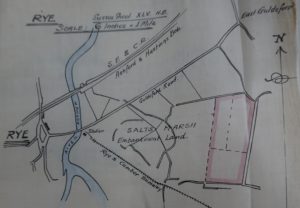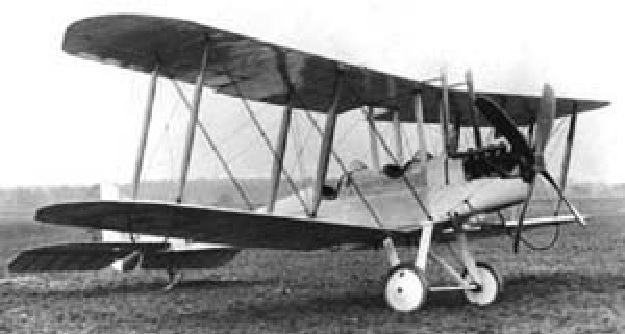At a Rye Town Council Meeting in November 2017, it was reported that the Airfields of Britain Commemorative Trust, a small specialist charity, was managing a project to mark former airfields across the country. They had identified from MOD records a former airfield on the Eastern side of Rye (in East Guldeford Parish), which had been used between 1916 and 1919 as a night operations field.
The airfield was a strip on farmland beyond Camberfields and was established by the RFC before the RAF was formed in 1918. It is recorded as used by 50 and 112 Home Defence Squadrons probably for night landing and refuelling to increase operating range.
Rye British Legion branch offered to get involved in marking this former WW1 airstrip, referred to as RAF Rye, but perhaps more correctly RFC Rye. In fact the WW2 former radar station (on the windfarm site) was known as RAF Rye. It has also been suggested that the strip might have been used prior to WW1 (perhaps as early as 1908) as a landing ground for early aircraft under development.

The Airfields of Britain Conservation Trust have produced at no cost to Rye a significant engraved plaque and have asked that we mount and locate it in an accessible place to mark the site for the public. After searching, a site was found on the Camber Road. East Guldeford Parish Council was approached and they have no objection to such a project.
The Harbourmaster has kindly allocated as a mounting block, one of the Second World War sea-defence stones lying at Rye Harbour. Local stonemason, Elliot Brotherton, has been approached to install the mounting block and plaque for an estimated price of £1125 (excl. VAT). A ceremony to mark the commemoration will be held on site early in the New Year.
Rye Town Council has agreed to support the project with a grant of £375 towards the cost. A further £375 has been pledged by an anonymous donor. Contributions towards the balance are invited by payment either through Rye News or the Rye RBL, and this will be forwarded to Rye Town Council as this is able to offset the VAT.
Further background is added for interest:
In the UK the RFC Home Establishment was not only responsible for training air and ground crews and preparing squadrons to deploy to France, but providing squadrons for home defence, countering the German Zeppelin raids and later Gotha bomber raids. The RFC (and the Royal Naval Air Service) initially had limited success against the German raids, largely through the problem of locating the attackers and having aircraft of sufficient performance to reach the operating altitude of the German raiders.
With the bulk of the operational squadrons engaged in France few could be spared for home defence in the UK. Therefore, training squadrons were called on to supply home defence aircraft and aircrews for the duration of the war. Night flying and defence missions were often flown by instructors in aircraft deemed worn-out and often obsolete for front-line service, although the pilots selected as instructors were often among the most experienced in the RFC.
It is likely that 50 Squadron based near Maidstone used RFC Rye as a night landing strip for BE2 aircraft and later BE12s.
Editor’s note: For those readers who want a better idea of the aircraft that flew from here, there is a short video of a restored BE2c from the Shuttleworth Collection flying, here
Image Credits: unknown .



